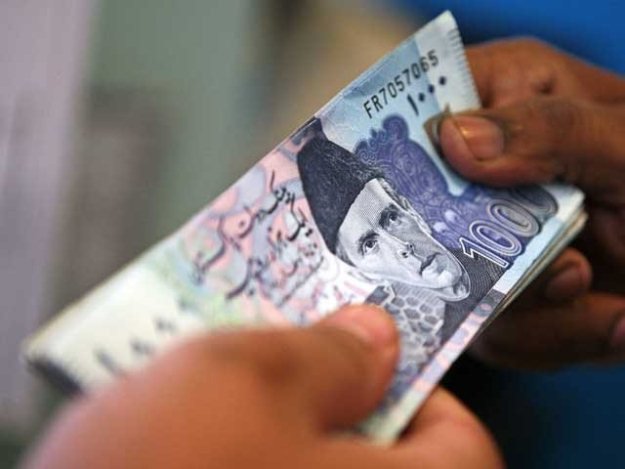
The government on Thursday informed the National Assembly about marked deterioration in Pakistan's external debt sustainability levels. This came amidst a weakening capacity of Debt Policy Coordination Office which is now run on an ad-hoc basis by a person whose contract is also expiring next month.
Pakistan's external debt in percentage of foreign exchange reserves also increased to the six years highest level. But the cost of external debt servicing in percentage of foreign exchange earnings slightly decreased.
In its Debt Policy Statement 2018-19, which the Finance Ministry submitted to the lower house of parliament, the government said informed the house that during the last fiscal year the country's external debt increased at a more rapid pace than its foreign exchange earnings.
Govt expects circular debt to level off this year
The Debt Policy Statement confirmed that the country was in violation of the Fiscal Responsibility and Debt Limitation Act of 2005 that binds to restrict the overall budget deficit to 4% of the GDP. The government also breached the threshold of limiting debt to below 60% of the GDP.
The Debt Policy Statement 2018-19 has been submitted to the National Assembly as per the requirements of the Fiscal Responsibility and Debt Limitation (FRDL) Act of 2005 aimed at allowing legislators to assess the government's failures and successes in managing the public debt.
The external debt increased to 130% of Pakistan's total foreign exchange earnings by the end of fiscal year 2017-18, showing that Pakistan's debt-bearing capacity has weakened. It was consecutive third year when the ratio slipped further. In fiscal year 2015-16 year the ratio was 110%.
Similarly, external debt as percentage of foreign exchange reserves alarmingly increased to 430%, reflecting the adverse impact in decline in the reserves due to growing current account deficit. This ratio was 290% in fiscal year 2016-17, which within one year jumped to six years high level.
The foreign exchange reserves as percentage of external debt and liabilities stood at only 17.2% in 2018. This ratio deteriorated from 25.6% a year earlier. This shows the government's vulnerabilities in bearing the debt and its servicing.
"The assessment of external public debt in terms of country's foreign exchange reserves depicts a deteriorating external debt coverage as widening current account deficit continues to deplete foreign exchange reserves," stated the Finance Ministry.
It added stagnation of exports over last few years primarily due to bottlenecks in energy and infrastructure continued to exert pressure on the country's liquidity position.
The external debt servicing-to-foreign exchange earnings ratio slightly improved to 10.8% from 12.4% due to lower principal payments while moderate growth witnessed in foreign exchange earnings, according to the policy statement.
The external debt-to-gross domestic product ratio also deteriorated from 20.5% to just 24.8%, depicting the increased debt burden of the country.
The Finance Ministry said the ratio also deteriorated because of net external public debt inflows as well as revaluation losses due to depreciation of rupee against other international currencies. The external debt and liabilities as percentage of the GDP also increased from 27.4% to 33.7% in just one year.
Total external debt and liabilities rose to $96.7 billion by the end of Sep 2018. Total debt and liabilities stood at Rs30.9 trillion at the end of September 2018, which was equal to 80.4% of the GDP. The public debt and liabilities at 76% and way above the original limit set under the original FRDL Act of 2005.
For a developing country like Pakistan, a debt-to-GDP ratio below 50% is considered sustainable. Anything above this threshold is counted as dangerous in the long term, according to economists.
The public debt-to-government revenue ratio surged to 477.3%, which in preceding year was 433.7%. This was way above the generally acceptable threshold of 350% for developing countries. This means fewer resources are available for spending on human resources and development.
The government also could not increase revenues and its receipts were not sufficient to finance current expenditures. Revenue deficit – total revenues minus current expenses – was recorded at 1.7% of the GDP in 2017-18. This was significantly worse than the previous year.
The primary deficit – which is calculated by excluding interest payments — also increased to 2.1% of GDP from 1.5% just a year ago. This is one of the contentious issues between Pakistan and the International Monetary Fund (IMF). The global lender is seeking primary balance that can only be achieved by either cutting the developed budget or the defense spending.











































COMMENTS
Comments are moderated and generally will be posted if they are on-topic and not abusive.
For more information, please see our Comments FAQ